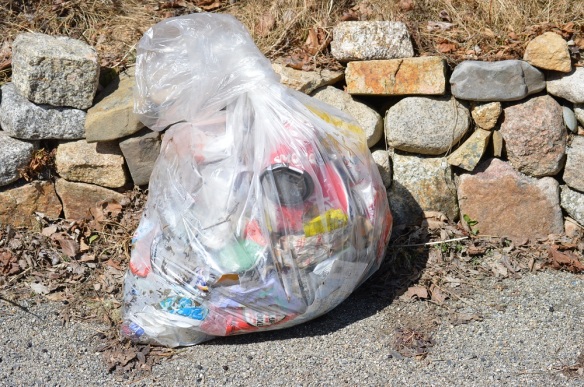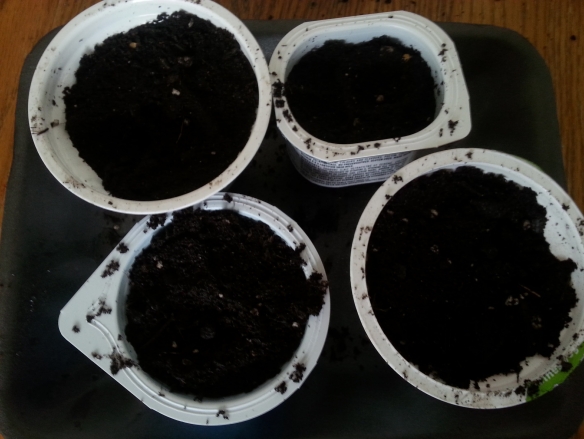This time of year, when the snow is finally gone but the ground cover is still brown and dead, it is so disappointing to see all the garbage littering the sides of the road and the ditches. However, it is also the perfect time to clean it up.

This was from only a short walk down our road and back up, and we need to go down the other way tomorrow. Most of what we found was plastic: bags, yogurt cups, packaging, cups, straws. And then there were the Tim Horton cups, chip and candy packaging, and a few other things we will just label disgusting.
Of course, throwing it all into a plastic bag and sending it off to the local dump doesn’t really get rid of the problem, it just relocates it. So we have decided to figure out how we, as a family, can stop contributing to the problem of garbage.
Nature Walk:
Get yourself a trash bag, some gloves and take a walk in your neighbourhood. Pick up any trash you come across and take note of what you find.
Nature Journal:
Draw the various items you found in your clean up walk and brainstorm ways you can avoid these items. Here are some of our ideas:
Plastic shopping bags: Make a cloth bag that you can fold up and keep in the car or purse to use for odd purchases. Use reusuable bags for grocery shopping.
Straws: Do I really need a straw? Just drink right from the cup. If a straw is really necessary, then find some biodegradeable paper straws to keep on hand.
Plastic food bags for lunch boxes: Make some cloth sandwich wrappers. Use reusable containers or bento boxes.
Plastic cups: Find a good quality reusable water bottle. Make our own smoothies or iced cappucinos instead of buying them in plastic cups – cheaper that way too!
Paper coffee cups: Use our own travel mug at Tim Horton’s or ask for a china cup if dining in.
Snack packaging: Stop buying individually packaged snacks. Make our own granola bars. Use yogurt from a big tub that can be recycled, and reusable smaller containers.
Other plastics: Find out what plastics can be recycled, be sure to recycle them, and don’t buy the ones that can’t be.






